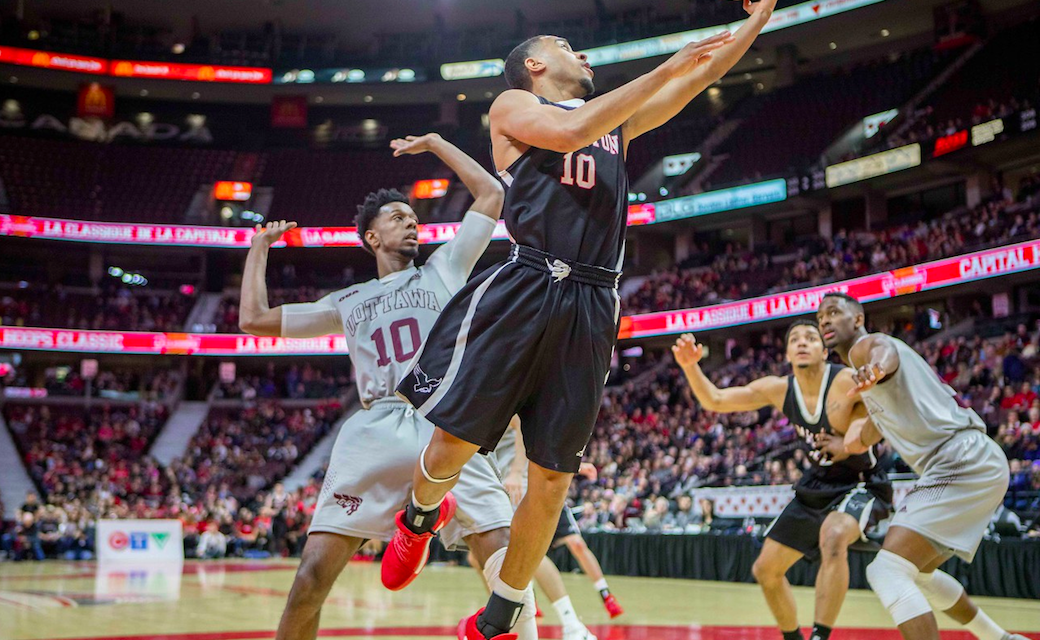The corruption and scheming ingrained in NCAA recruiting have never been a secret. The FBI’s investigation into college sports only confirmed the presumed truth that college recruiting is a wild and shady business.
The biggest programs and players in college basketball are all involved, and NCAA president Mark Emmert says the allegations are indicative of larger systemic issues in college sports.
“Simply put, people who engage in this kind of behaviour have no place in college sports. They are an affront to all those who play by the rules.” Emmert said in a statement.
It appears the NCAA will double down on penalizing athletes, coaches, and programs rather than addressing the systemic issues that cause the rules to be broken. As long as the NCAA’s amateurism rules prevent student-athletes from being paid, the fundamental problems with college basketball and football with never be resolved.
The NCAA has reached a point where neither athletes nor programs have a choice in participating in the corruption that permeates recruiting. Players can’t go straight to the NBA or NFL from high school, and programs will have a hard time finding success without impressing the top-tier prospects.
The athletes and programs deciding to forget the NCAA’s amateurism rules are rebelling against a system that profits by keeping its athletes broke. Student-athletes with plans to go professional are stuck playing collegiately while assuming risks to their bodies and their futures. The time-commitment and expectations involved in playing sports at a high-level are equivalent to a full-time job. Even less-talented athletes are at school to play sports, and the “student” in student-athlete is rarely emphasized.
College athletics is a billion-dollar industry where everyone involved is profiting except for the athletes. Television networks, journalists, coaches, agents, universities, professional leagues and shoe companies all stand to make money. Everyone gets paid in cash, while the players get paid in scholarships.
The student-athletes are expected to act like professionals, play like professionals, put in the time like professionals, but are not paid like professionals.
“Money will surround them, and they’ll be punished for daring to touch it,” Bomani Jones wrote in a column for SB Nation.
While the NCAA endures scrutiny and refuses to overhaul the system, opportunities present themselves for other organizations to capitalize on the NCAA’s refusal to change. Suggestions have been made for the professional leagues and the NBA G-League to play a larger role, but the answer for athletes could lay north of the border.
Tara Hahto, the Manager of Compliance and Eligibility with USports, says the rules with college sports in Canada aren’t as stringent.
“We don’t exactly have an amateurism rule like the NCAA has,” Hahto said in a 2016 interview. “We do allow athletes to come in after having a professional career”
The NCAA prevents athletes from receiving any money from athletic programs, taking payments from agents, receiving endorsements or starring in commercials, selling autographs or memorabilia from their athletic career and they cannot hire an agent until they choose to go pro. The rules also prevent student-athletes from taking gifts as small as free tattoos, plane tickets and meals.
In Canada, student-athletes aren’t under such strict restrictions. Two of the rules that could attract major athletes to come to the Canada concern endorsements and agents.
Companies such as Nike, Jordan, Adidas and Under Armour are quick to offer endorsement deals to top athletes once they are finished with the NCAA. This only affects a small number of athletes that are top prospects to go pro
The USports rules would allow athletes like those mentioned in the recent FBI report to sign a deal with Nike or Adidas during their time in university.
“So far, [USports] student-athletes accepting endorsements has not been an issue, but we have discussed this topic on numerous occasions,” Hahto said.
The rules would also allow athletes to receive representation from an agent before they are eligible to be drafted. Hahto says that the differences in rules could attract top-prospects in the NCAA to make the move up north.
“Our men’s hockey league is a fine example [of attracting top-level talent],” Hahto said. “The quality of play is incredible. We have players who have competed in the OHL or they played in the Q’.”
“I think our regulations have the ability to attract incredible student-athletes,” Hahto said.
Hahto couldn’t speak to the possibility of paying athletes in the future. She said that is an issue that would have to be discussed at a membership meeting.
While USports doesn’t have the money or prestige of the NCAA, an upheaval of rules could provide a template for paying athletes. Rather than going pro in Europe or Asia like past prospects have, Canadian universities could provide a paid alternative to the NCAA without the cultural change for the predominantly American athletes.
While the NCAA seems content with their amateurism rules as long as they stand to profit, the pressure to change will have to come from somewhere else.











Recent Comments